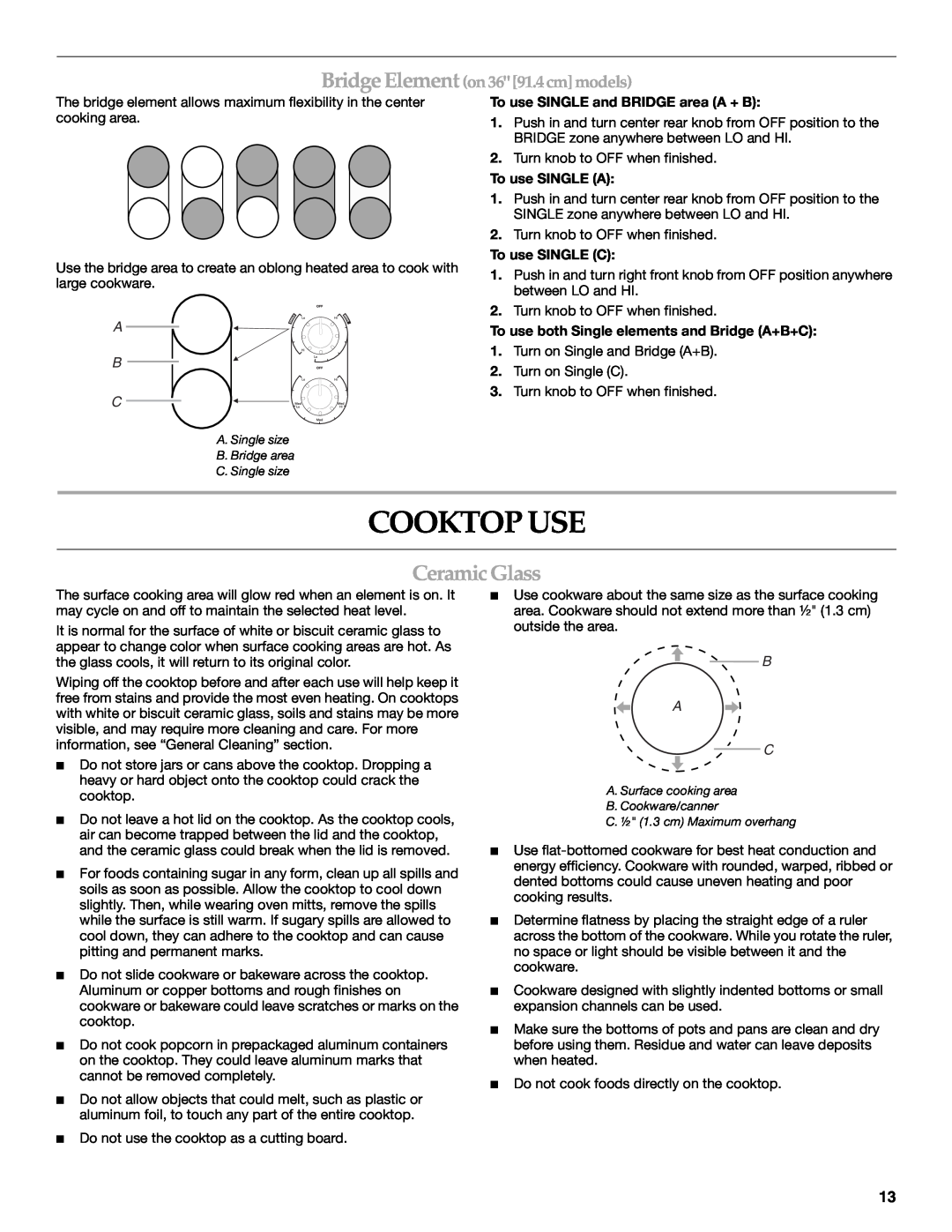KECC507, KECC506, KECC056 specifications
The KitchenAid KECC508, KECC568, KECC507, KECC567, and KECC502 are a series of high-quality cooktops that cater to various cooking needs and preferences, designed with a blend of style and functionality. These models showcase KitchenAid's commitment to performance and innovation, providing users with a reliable cooking experience.Starting with the KECC508, this model features a sleek, glass-ceramic surface that not only enhances the aesthetic appeal of any kitchen but also facilitates easy cleanup. It is equipped with a powerful four-burner configuration, which includes two high-output burners ideal for quick boiling and searing. The intuitive control knobs allow for precise adjustments, ensuring that even the most delicate dishes are cooked to perfection. Moreover, the KECC508 includes simmer settings, ideal for sauces and soups that require low, steady heat.
The KECC568 is a standout with its premium features such as the dual-zone burners, which provide versatility for different pot sizes. This model is equipped with a powerful 10-inch burner, allowing for greater heat distribution and even cooking. The KECC568 also comes with a hot surface indicator light, enhancing kitchen safety by alerting users if the surface is still hot after use.
The KECC507 retains many of the features found in its counterparts but focuses on an enhanced user experience. With easy-to-use touch controls and a digital display, users can operate this cooktop intuitively. Its robust five-burner configuration accommodates sizable cookware, making it perfect for those who enjoy entertaining.
Moving on to the KECC567, this model is tailored for those who appreciate flexibility in cooking. With five cooking zones, including various sizes, this cooktop allows users to multitask effortlessly. Its quick-heating capabilities minimize wait times, while the residual heat indicator shows when the burners are still hot, thereby adding an extra layer of safety.
Lastly, the KECC502 is designed with energy efficiency in mind, utilizing induction cooking technology that delivers rapid heating while also reducing overall energy consumption. The induction feature allows for precise temperature control, which is ideal for gourmet cooking, resulting in less wasted energy and a more sustainable kitchen environment.
Overall, KitchenAid's KECC508, KECC568, KECC507, KECC567, and KECC502 cooktops provide a blend of distinctive features, advanced technologies, and user-centric designs, catering to both amateur cooks and seasoned chefs. With their focus on performance, safety, and convenience, these models make a significant addition to any modern kitchen.
![Bridge Element (on 36" [91.4cm] models)](/images/new-backgrounds/180630/18063025x1.webp)
